◇ Vairocana means the sun or light in Sanskrit, and is the founder of Avatamsaka Sutra. Mahavairocana (Dainichi Nyorai) regarded as the Primordial Buddha of the universe in esoteric Buddhism in the Heian period is the Buddha developed from Vairocana.

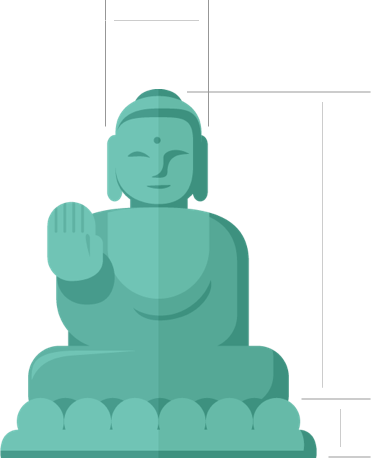
| Seated Height | 1,498cm |
|---|---|
| Face Length | 533cm |
| Face Width | 320cm |
| Eye Length | 102cm |
| Nose Width | 98cm |
| Nose Height | 50cm |
| Mouth Length | 133cm |
| Ear Length | 254cm |
| Palm Length | 148cm |
| Middle Finger Length | 108cm |
| Feet Thickness | 374cm |
| Knee/Lap Thickness | 223cm |
| Copper Seat Height | 304cm |
| Stone Seat Height | 252cm〜258cm |
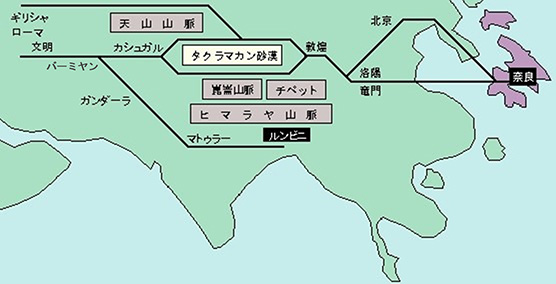
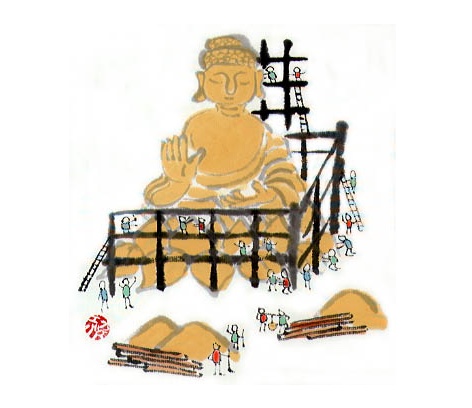

After its introduction, Prince Shotoku and other national leaders spread Buddhism. Soon after the relocation of the capital from Fujiwara-kyo to Heijo-kyo, political changes, disputes among imperial families, epidemics, and natural disasters frequently occurred. In 741 (the 13th year of Tempyo), Emperor Shomu issued the imperial decree to construct provincial temples, thinking that the power of Buddhism would save the country by building a statue of Buddha and a seven-story pagoda in each province.
◇ Imperial decree to build provincial temples: Constructing a temple in each province (there were 62 at that time) together with a provincial nunnery for the protection of the nation.
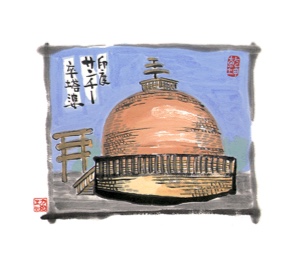
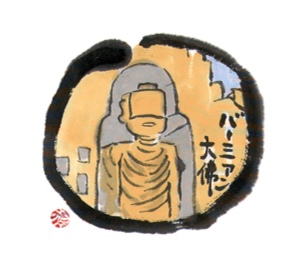
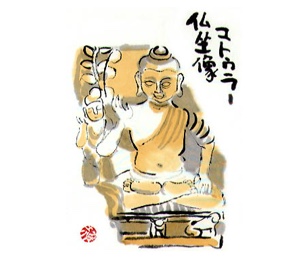
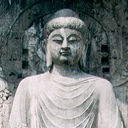
In 752 (the 4th year of Tempyo-Shoho), the ceremony to consecrate the Great Buddha by inserting the pupils with a brush called “Daibutsu Kaigan Kuyo-e” was held. The officiating monk was an Indian priest named Bodhisena. At the ceremony, interesting overseas music and dancing mainly from China and Korea were performed. The ceremony became the largest international event in East Asia at that time. Todaiji Temple was expected to widely research the religious principles of Buddhism, in addition to playing a role to protect the nation. The temple organized a system to study the six sects of Buddhism in South Capital (Nara), including Kegon, Hosso and Sanron. As a temple to simultaneously study the six sects, it functioned like a national university today. The Kegon sect was emphasized the most, and the Vairocana-Buddha of that sect was placed as the principal image there. However, due to a big earthquake in 855 (the 2nd year of Saiko), the head of the Buddha fell down. In addition, in 1180 (the 4th year of Jisho), the Great Buddha Hall was burnt down when Taira no Shigehira set fire to the South Capital during the battle between the Minamoto clan and the Taira clan. The hall was reconstructed soon, but it was burnt down again during the war in 1567 (the 10th year of Eiroku) during the Sengoku period. Then the Great Buddha exposed to rain was repaired, and in 1692 (the fifth year of Genroku), the ceremony to consecrate the Great Buddha was held, followed by the ceremony to celebrate the completion of the Great Buddha Hall called “Rakkei Kuyo” held in 1709 (the 6th year of Hoei). Then, after the order to separate Shintoism from Buddhism (policy to regard Shintoism as the national religion by separating it from Buddhism) issued in 1868 (the 1st year of Meiji), all temples in Nara declined, and people did not pay attention to the Great Buddha Hall. Under these circumstances, the Hall was demolished for repair. Since another “Major Repair in Showa,” the Great Buddha and its Hall have been maintained well until today.

Stroll Around Naramachi (Town of Nara)
Starting as a town of shrines and temples, “Naramachi” prospered as a town of commerce for a long time. You can fully enjoy its nostalgic townscape, where a lot of old merchant houses till remain. Walk around narrow alleys in the town, and then you will find your favorite spots.
See More
Tradition Craftsmanship Handed Down to Artisans
A variety of excellent craft works and specialties have been produced from a creative climate over a long history. Ink brushes, India ink, and bleached cloth are main specialties of Nara. Integration between tradition and contemporary taste is also attractive.
See More
Nara's World Heritage Sites
These refer to Nara City's historical remains, landmarks, and natural monuments, which were added to the list of UNESCO World Heritage Sites in December of 1998. These items are listed as eight "Historic Monuments of Ancient Nara."
See More